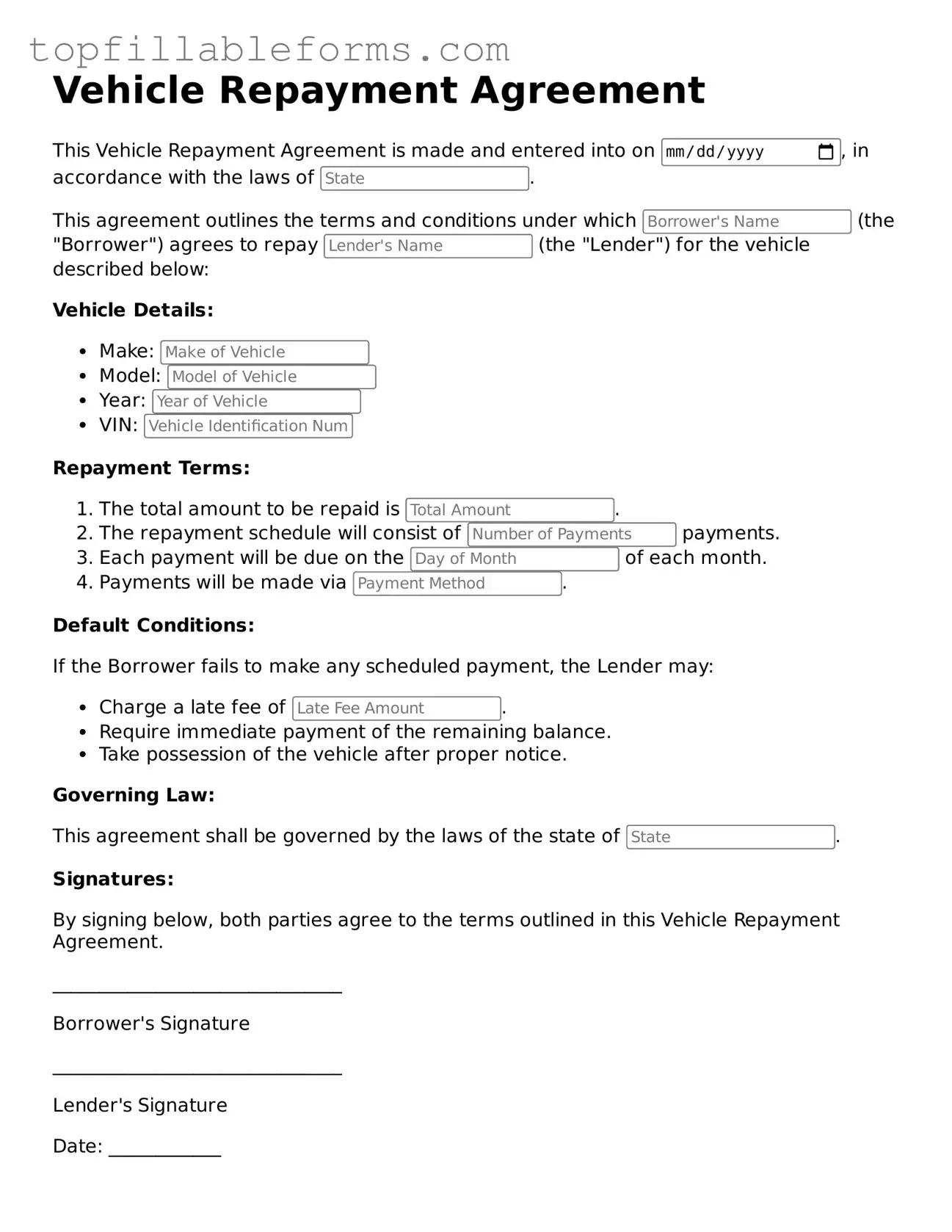Free Vehicle Repayment Agreement Form
The Vehicle Repayment Agreement form is a legal document that outlines the terms and conditions under which a borrower agrees to repay a loan used to purchase a vehicle. This agreement protects both the lender and the borrower by clearly defining payment schedules, interest rates, and consequences for default. Understanding this form is essential for anyone financing a vehicle, ensuring that all parties are on the same page regarding their financial responsibilities.
Open Vehicle Repayment Agreement Editor Here
